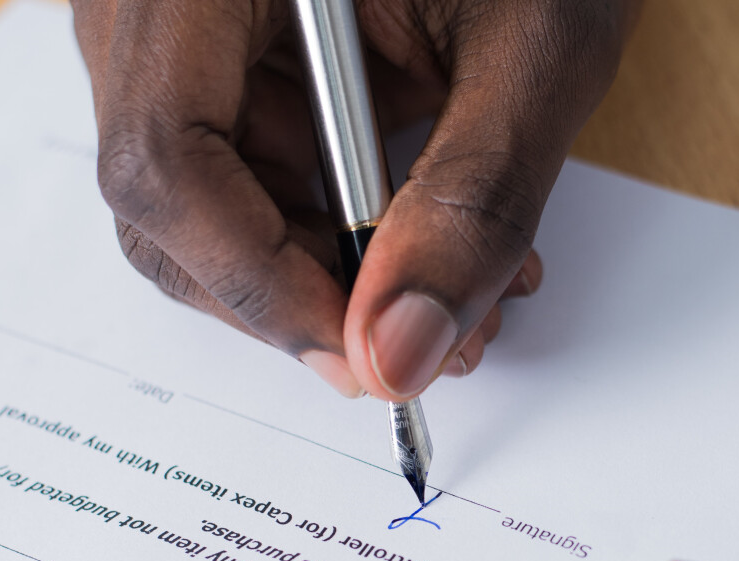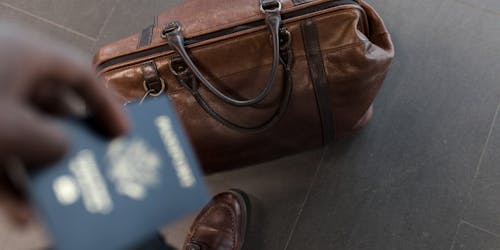Writing a letter of permission may appear simple, but it has important implications in many professional and personal situations. When I had to write my first letter of permission, I was overwhelmed by the desire to be accurate, official, and unambiguous. I searched the internet for advice and templates, but only found repetitious and generic suggestions. This article intends to give you a complete approach to writing an effective letter of permission, accompanied by ideas and examples that go beyond the standard templates.
The Effectiveness of a Well-Written Permission Letter
Consider yourself in a circumstance where you need to access sensitive information for a project or need permission to use a specific resource. A well-written letter of permission can be the key to attaining your aim. A Harvard Business Review study found that concise and well-structured written communication boosts the likelihood of gaining relevant licenses and approvals. In this article, I’ll go over the intricacies of creating a persuasive letter of permission, along with templates and samples that you may customize to your individual requirements.
What is a Letter of Permission?
A letter of permission is a written request to use, access, or undertake an action that requires authorization. Whether you’re requesting permission to access copyrighted material, enter a restricted area, or take time off from work, the structure and substance of your letter can make a significant difference in the outcome.
Why Is a Letter of Permission Important?
A permission letter communicates not just respect for the authority being addressed, but also professionalism and adherence to etiquette. It has the potential to facilitate more efficient interactions and approval processes. For example, when I needed access to a restricted archive for study, my precise and respectful permission letter secured me the access I required without difficulty.
What Should Be Included in a Letter of Permission?

When writing a letter of permission, make sure to include all of the necessary components to create a clear, succinct, and thorough request. Here’s a full list of what to include:
#1. Personal Details
Your personal information should be clearly presented at the beginning of the letter. This includes:
- Full Name: Use your complete name to avoid any mistakes.
- Address: Include your complete address as a point of reference and for future correspondence.
- Contact Information: Please include your phone number and email address. This allows the recipient to contact you easily if they require additional information or clarification.
#2. Date
Include the date you are writing the letter. This aids in tracking correspondence and lends a sense of professionalism to your inquiry.
#3. Recipient Details
The information about the person or entity you are addressing should be clearly expressed. This includes:
- Full Name: If possible, address the letter to an individual rather than a department.
- Title/Position: Include the recipient’s title or position to ensure the message is delivered to the correct person.
- Address: To avoid delivery issues, please include the recipient’s full address.
#4. Subject Line
A clear and concise subject line summarizing the letter’s purpose. This allows the recipient to quickly understand the intent of your request. Consider the following: “Request for Permission to Access Restricted Area” and “Permission to Use Copyrighted Material.”
#5. Introduction
The introduction should briefly describe who you are and the purpose of your letter. Be straightforward and to the point. For example:
Advertisements
“Dear [recipient’s name],
“I am writing to ask for permission to [describe your request].”
#6. The purpose of your request
Please explain why you are requesting permission. Provide enough detail to help the recipient understand the necessity and importance of your request. For instance:
“This request is necessary because [explain the reason for your request].”
#7. Detailed Information
Provide all relevant details related to your request. This includes:
- Specific Dates/Times: If your request is time-bound, include the specific dates and times.
- Location Details: If you need access to a particular location, specify the exact address or area.
- Reason for Request: Explain why this permission is crucial for you and how it will benefit your work or project.
#8. Supporting Documents
Mention and attach any supporting documents that can substantiate your request. This could include:
Advertisements
- Official Forms: Any forms that need to be filled out.
- Identification Proof: Copies of identification if requested.
- Previous Correspondence: Any prior communication that supports your request.
#9. Contact Information for Follow-Up
Reiterate your contact details at the end of the letter, making it easier for the recipient to reach you. For example:
“If you need further information or have any questions, please feel free to contact me at [your phone number or email address].”
#10. Conclusion
End the letter by expressing gratitude and looking forward to a positive response. For instance:
“Thank you for considering my request. I look forward to your good response.”
#11. Signature
Conclude with a polite closing (e.g., “Sincerely,” “Best regards,”) followed by your handwritten signature (if mailing a physical copy) and your typed name.
By adding these aspects, your letter of permission will be well-structured, professional, and more likely to receive a positive answer.
How to Write a Letter of Permission: Step-by-Step Guide

Writing a letter of permission requires more than just putting words on paper. Consider your audience, communicate clearly, and use appropriate language. Write an effective letter of permission using this step-by-step approach.
#1. Understand Your Audience
Knowing your audience is critical. Determine who will be reading your letter and tailor your language and formality accordingly. For example, a letter to a government official will differ greatly from one to a school administrator.
- Government Officials: Use formal language and address the official with their full title and surname. Include all necessary requirements and adhere to a rigorous format.
- School Principal: While still formal, a letter to a school principal can be a little more casual. Address the principal by title and last name, and make sure your letter is respectful and clear.
- Corporate Executives: For business-related permissions, maintain a professional demeanor. Emphasize the benefits to the company and keep the letter concise and simple.
Understanding your audience’s expectations and conventions will help you write a letter that speaks to them and boosts your chances of receiving a good response.
#2. Be specific and concise
Make your request simple and concise. Avoid using superfluous jargon or overly complex language. The idea is to make it as simple as possible for the receiver to comprehend your request.
- Clear Request: Begin with a straightforward statement about your request. Consider the following scenario: “I am writing to request permission to access the restricted archives for my research project.”
Avoid Jargon: Use basic language that everybody may understand, regardless of background. - Stay Focused: Stay on track and avoid tangents. This keeps your letter succinct and effective.
Being detailed and brief not only demonstrates your respect for the recipient’s time but also aids in the efficient communication of your request.
#3. Provide Required Details
Include all necessary information so that the receiver can make an informed decision. If you’re requesting access to a location, include the dates, times, and reasons.
- Specific Dates and Hours: Mention the specific dates and hours you require permission. Like the following: “I request access to the archives from July 10 to July 15, between 9 AM and 5 PM.”
- The Reasons: Explain why you need the permission. Provide a compelling explanation for your request. Examples include: “Access to these archives is crucial for my dissertation on local history.”
- Additional Information: Include any additional relevant information, such as the reason for your request, how it benefits the recipient and any other details that may help your case.
Providing all relevant facts upfront reduces the need for back-and-forth communication and facilitates a faster response.
#4. Be kind and respectful
Use respectful language and respect the recipient’s time and authority. Being kind and respectful can help make your request more acceptable.
- Respectful Salutation: Begin with a nice greeting. For example, “Dear Dr. Smith,” or “To the Honorable Mayor,”
- Polite Language: Express civility with expressions like “please,” “thank you,” and “I would be grateful if…”.
- Acknowledgment of Authority: Recognize the recipient’s authority and expertise. One example is: “I appreciate your consideration of this request given your extensive knowledge in the field.”
Being polite and considerate not only improves the tone of your letter but also reflects positively on you as a professional or individual.
#5. Follow up
If you do not obtain a response within a reasonable time, send a courteous reminder. Follow-up demonstrates your seriousness about the request and keeps it on the recipient’s attention.
- Reasonable Time Frame: Allow one to two weeks before following up.
- A Polite Reminder: Send a brief, polite follow-up email or letter. For example, “I’m writing to follow up on my letter from [date], requesting permission to [request].” I’d appreciate an update at your earliest convenience.
- Express your gratitude: In your follow-up message, express gratitude to the receiver for their time and thoughtfulness. For example, “Thank you again for considering my suggestion. I am looking forward to your favorable reaction.”
Following up gently and professionally increases your chances of receiving a response and achieving your goal.
Follow these steps to ensure that your letter of permission is well-structured, respectful, and successful in articulating your request.
Template for Letter of Permission
Below is a template that you can use for a variety of applications. Remember, this is only a starting point; feel free to modify it to suit your needs.
[Your name]
[Your address]
[City, State, Zip Code].
[email address]
[Date]
[The recipient’s name]
[Recipient’s title]
[Recipient’s address]
[City, State, Zip Code].
Dear [recipient’s name],
I’m writing to request permission to do [describe your request]. This request is necessary because [explain why you need it]. I believe that granting this permission will [explain the benefit or importance].
To help with this request, I’ve included [any relevant documents or additional information]. If you require any information or have any issues, please contact me at [your phone number or email address].
Thank you for considering my request. I am looking forward to your favorable reaction.
Sincerely, [Your Name].
How Formal Should My Letter Be?
The level of formality depends on the addressee. In general, err on the side of formality, especially when addressing an authoritative individual or institution.
How Long Should My Letter Be?
Keep your letter brief—ideally one page. Provide the important details while avoiding needless fluff.
I recall a time when my colleague wanted access to a private database for a project. His initial request was denied due to lack of clarity. After revising the letter with a clear structure and detailed purpose, he received approval. This experience taught me the importance of precision and respect in written communication.
Key Takeaways
- Always be precise and detailed about your request.
- Use respectful words and a courteous tone.
- Provide all required details to assist the receiver make an informed decision.
- Follow a professional letter format to promote readability and professionalism.
- Don’t be afraid to follow up if you don’t get a quick response.
Conclusion
Writing a letter of permission does not have to be intimidating. With the proper strategy and attention to detail, you can create a compelling request that has a better chance of getting approved. Have you ever needed to write a permission letter? Which tactics did you find most effective?
Related Articles
- STUDY ABROAD PROGRAMS IN 2024-2025: Costs & Requirements
- HOW TO APPLY AND GET STUDY ABROAD PROGRAMS IN 2024-2025
- Top Fully Funded International Scholarships for Nigerian Students In 2024-2025
References
Advertisements






